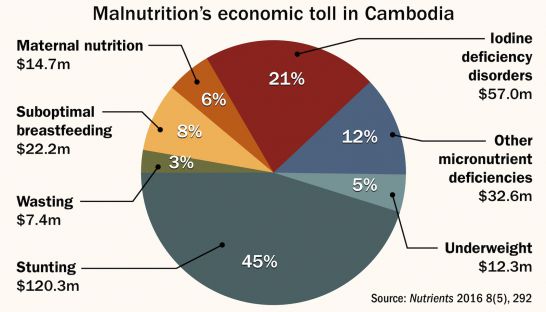|
Cambodia is a fast-growing, highly open economy, and just attained lower-middle-income status this year. The country’s strategic location, China’s changing trade patterns, and ongoing regional integration provide further opportunities. The good news is that government has taken important steps (for example, investing in the energy sector to reduce the cost of doing business and improving services in trade, payment, and business registration) that will help Cambodia capitalise on these opportunities. Nonetheless, further policy actions are needed to promote sustained and inclusive growth.
1 Comment
The United Nations’ involvement in Cambodia witnessed important changes in the second half of the 1980s. Bilateral and regional talks were stepping up. The discussion between Vietnam and Indonesia, and the first private meeting between HRH Prince Sihanouk and Prime Minister Hun Sen in late 1987 in Paris contributed to the Jakarta Informal Meeting (JIM1, JIM2 and JIM3).
The collapse of the Soviet Union made China and Vietnam – Cambodia’s communist masters – acquiesce that time is ripening to look each other in the eye and to leave behind animosities – like HRH Prince Sihanouk told Henry Kissinger: “Let bygones be bygones”. Last December, 195 countries, including Cambodia, gathered in Paris to negotiate a new global climate agreement under the United Nations Framework Convention on Climate Change (UNFCCC). The result – the first-ever universal, legally binding global climate deal – sets out a global action plan to put the world on track to avoid dangerous climate change by limiting global warming to well below 2 degrees Celsius. To further underline their determination countries also agreed to pursue efforts to limit temperature increase to 1.5 degrees. Now, 10 months on from that historic outcome, the European Union (EU) remains proud of the ambitious Paris Agreement and Cambodia should be proud too. However there is no room for complacency after the success of the Paris Conference. For the vision of a global low-emissions future to materialise, our attention needs to turn to putting our words into action.
The United Nations in Cambodia celebrates the International Youth Day on the 12th of August by recognising the central role young people play in the development of Cambodia. This year’s global theme, “The Road to 2030: Eradicating Poverty and Achieving Sustainable Production and Consumption”, calls for all decision-makers around the world including Cambodia to actively seek out and support the meaningful participation of young people in the decision-making and implementation of Sustainable Development Goals (SDGs). International Youth Day in Cambodia is a day dedicated to celebrating young peoples’ views and initiatives. Celebrations take place all around the world to recognise the importance of youth efforts, collaboration and participation in development and poverty eradication.
It might seem risky to disrupt a power network. Nonetheless, welcome change is coming to Cambodia’s electricity system. Just as emails have disrupted postal services and personal computers have disrupted typing pools, new technologies are remaking the electricity industry. If authorities seize the moment, Cambodia can leapfrog over current problems and be at the forefront of the transformation. Power systems need to get smarter not bigger. Electricity can now be produced where it is consumed. Centralised mega-plants are being by-passed. And digital technologies are changing the power business.
By: Kundhavi Kadiresan
Many people reading this have, most likely, never personally experienced real chronic hunger. And, as the author, I will admit neither have I. I fondly recall my first visit to Cambodia as a tourist. It was a family holiday and we went to Siem Reap. It seems like a lifetime ago, long before I joined the Food and Agriculture Organization of the United Nations (FAO), and while I do recall noticing that some people were poor, I now wonder if I had also realised that some people were undernourished. Back then, I don’t think I had. By: Shamshad Akhtar
The Asia-Pacific region’s successful achievement of the 2030 Agenda for Sustainable Development needs to be driven by broad-based productivity gains and rebalancing of economies towards domestic and regional demand. This is the main message of the Economic and Social Survey of Asia and the Pacific 2016, published last week by the Economic and Social Commission for Asia and the Pacific. Such a strategy will not only underpin the revival of robust and resilient economic growth, but also improve the quality of growth by making it more inclusive and sustainable. How should Asia-Pacific policymakers go about implementing such a strategy? Approaches by developing Asia-Pacific economies that are tilted more towards reliance on export-led economic recovery will be ineffective under the current circumstances. By: Claire Van der Vaeren
Today marks International Women’s Day, when we focus on ending discrimination against women and girls. A life free of discrimination is a basic human right that the female half of the population is still struggling to realise in a world where no country has yet achieved gender equality. Women’s empowerment and gender equality are also essential ingredients for sustainable development. This year the theme of International Women’s Day is Planet 50/50 by 2030: Step it up for gender equality, highlighting the need to accelerate our efforts. It has been over 20 years now since world leaders committed to gender equality and women’s empowerment at the Fourth World Conference on Women in Beijing. By: TUY SEREIVATHANA AND ETELLE HIGONNET
It’s time for us to discuss, plan and act together to protect Cambodia and our children from climate change. We must address climate change from the heart, and not treat it as an abstraction or a problem for other countries. The recent landmark international climate change agreement signed in Paris is a turning point for the planet. It’s the best chance to keep Earth hospitable to human life. Countries agreed to globally coordinate action on climate change; embraced a common goal to strive for a limit of 1.5 degrees Celsius above preindustrial levels; and stated that emissions should peak “as soon as possible” and then rapidly decline. |
Categories
All
Archives
October 2017
Disclaimer: All views expressed here belong to their respective author and do not represent the views of Enrich Institute
|


 RSS Feed
RSS Feed
